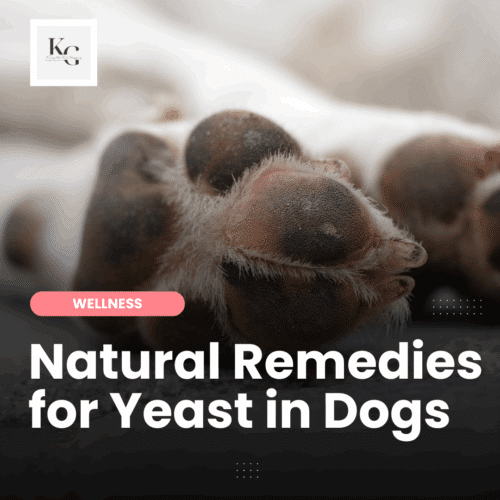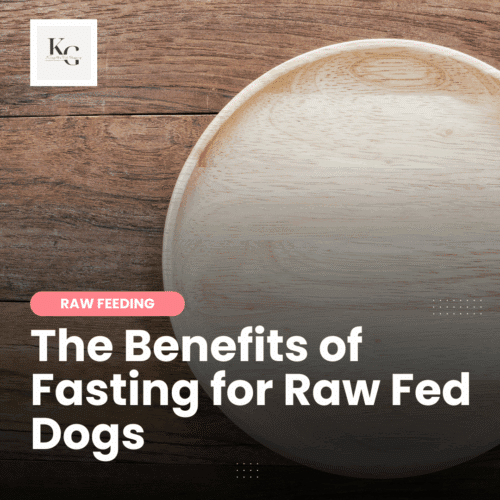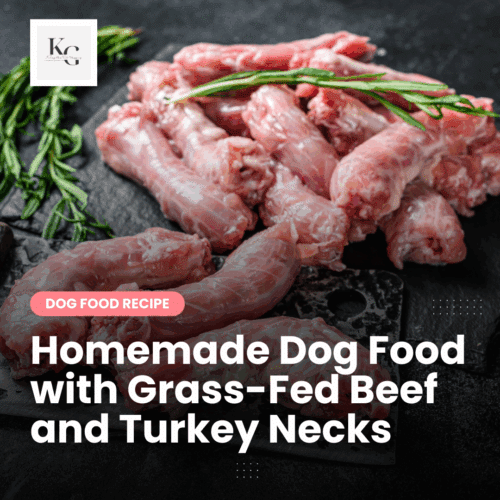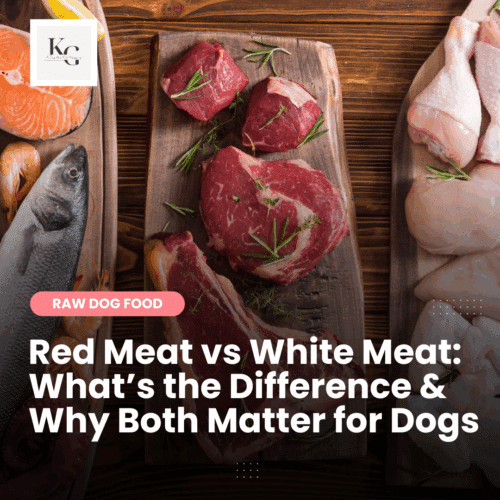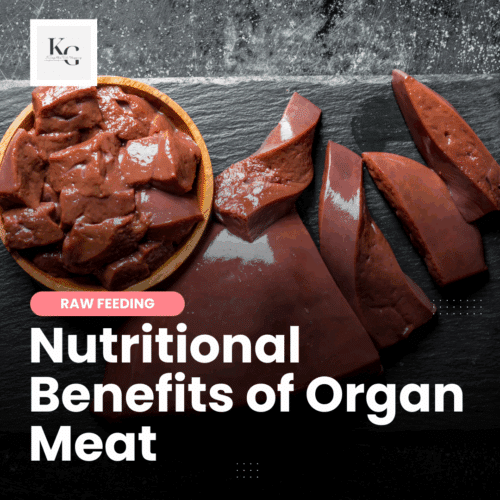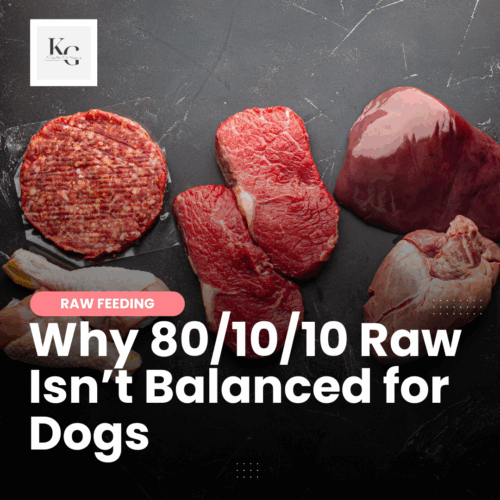Keep the Tail Wagging is supported by pet parents. I occasionally earn a commission (at no additional cost to you) when you click through an affiliate link to one of my favorite products. Thank you for your support. Read More
As raw feeders, we often hear about rotating proteins and feeding a variety to our dogs, but what exactly is the difference between red and white meat? How do we know which proteins fall into each category, and why feeding both is important?
Let’s break it down.
Understanding Red and White Meat
The difference between red meat and white meat is myoglobin, a protein found in muscle tissue that stores oxygen.
- Red meats are higher in myoglobin, which gives them a darker color even when raw.
- White meats contain less myoglobin and appear lighter or pale in color.
The myoglobin content is influenced by the animal’s activity level and muscle type:
- Muscles used for endurance (like legs in grazing animals) tend to be darker.
- Muscles used for quick bursts of movement (like wings in birds) tend to be lighter.
Common Red Meats
These proteins are naturally higher in myoglobin and are classified as red meat:
- Beef
- Lamb
- Goat
- Venison (deer)
- Elk
- Bison
- Duck (often considered red due to its dark, rich meat, though technically a bird)
- Pork (nutritionally closer to red meat, despite the old marketing line “the other white meat”)
Common White Meats
These proteins are lower in myoglobin and fall into the white meat category:
- Chicken
- Rabbit
- Quail
- Pheasant
- Turkey
- Fish (all types of fish, from white fish to salmon, are classified as white meat due to very low myoglobin)
Why Dogs Benefit from Both Red and White Meat
Dogs are natural facultative carnivores (or omnivorous carnivores), meaning they thrive on animal-based nutrition but do well with variety. Here’s why both red and white meats are valuable in their diet:
Benefits of Red Meat:
- Rich in iron — especially heme iron, which is highly bioavailable
- Higher in zinc — supports immune function, skin, and coat health
- More B vitamins — especially B12 and niacin, vital for metabolism and energy
- Higher fat content — excellent for active dogs needing energy-dense meals
- Supports muscle development and stamina
Benefits of White Meat:
- Lean protein — great for weight management or dogs prone to pancreatitis
- Lower fat — helpful for dogs needing a lower-calorie diet
- Highly digestible — ideal for dogs with sensitive stomachs or when transitioning to raw
- Source of selenium and other antioxidants
Here’s a side-by-side comparison of red and white meat:
| Red Meat | White Meat |
|---|---|
| Higher in iron (heme iron) | Leaner, lower in fat |
| Higher in zinc & selenium | Easier to digest for sensitive dogs |
| Rich in B vitamins (esp. B12, niacin) | Good source of selenium & some B vitamins |
| Provides energy-dense calories | Great for weight management & lower calorie diets |
| More CLA (conjugated linoleic acid), supports metabolism and immune system | Often gentler for dogs recovering from illness |
| Higher myoglobin — supports oxygen transport in muscles | Helps balance fatty acids if the diet is heavy in red meat |
The Importance of Variety
Rotating between red and white meats helps to:
- Provide a balanced amino acid profile
- Reduce the risk of developing a sensitivity to a single protein
- Ensure a broad range of vitamins and minerals
- Support healthy gut flora through varied nutrient input
- Mimic nature — wild canines naturally eat whatever prey is available, leading to seasonal variety
In short:
- Red meat tends to be more nutrient-dense — great for active dogs, growing puppies, and working breeds.
- White meat tends to be lighter and easier to digest — great for older dogs, dogs with sensitivities, or when managing weight.
Rotating Proteins in My Dogs' Diet
Although the meals I formulate for my dogs contain multiple proteins, I like to rotate the main protein in their meals weekly.
| Week 1 | Week 2 | Week 3 | Week 4 | Commercial Raw | |
| Meat | Beef | Pork | Duck | Venison | Wild Coast Raw |
| Bones | Turkey Necks | Duck Necks | Duck or Turkey Necks | Duck or Turkey Necks | Rabbit & Pork Recipe |
| Organs | Beef, Pork, or Lamb | Beef, Pork, or Lamb | Beef, Pork, or Lamb | Beef, Pork, or Lamb |
Initially, I attempted to feed 50/50 red and white meat, but sourcing and budgeting made this challenging, which is why I add in a commercial brand, Wild Coast Raw, to add more balance.
Instead of stressing, I do my best when sourcing and formulating meals, focusing more on balance and supporting gut health than the classification of the main protein. Neither red nor white meat is inherently “healthier” across the board; they offer different benefits, therefore, I seek a balance of both. There's no need to stress, because dogs are opportunistic and will eat what's available.
Common Raw Feeding Mistake
I've seen people in groups advise others to rotate between red and white meat, which can help “balance” a raw dog diet. This isn't true. Balance is more related to the nutrient levels available in a recipe, and the type of protein used is only a part of the equation.



